o-Phenylenediamine
Synonym(s):1,2-Diaminobenzene;1,2-Phenylendiamine;1,2-Phenylenediamine;OPD
- CAS NO.:95-54-5
- Empirical Formula: C6H8N2
- Molecular Weight: 108.14
- MDL number: MFCD00007721
- EINECS: 202-430-6
- SAFETY DATA SHEET (SDS)
- Update Date: 2025-09-25 17:15:13

What is o-Phenylenediamine?
Chemical properties
White to off white solid
Chemical properties
o-Phenylenediamine is a white to brownish crystalline substance that turns red upon exposure to air.
The Uses of o-Phenylenediamine
o-Phenylenediamine is an amino substituted benzene used in the manufacture of dyes. Potential use in sensitive immunosensor for cancer biomarker.Environmental toxin on US EPA Toxic Release Inventory list (TRI) list.
The Uses of o-Phenylenediamine
It is actively involved in the preparation of pharmaceuticals by reacting substituted o-phenylenediamine with various diketones.
The Uses of o-Phenylenediamine
m-Phenylenediamine is used in the manu facture of a variety of dyes, in hair dyeformulations, as a rubber curing agent, inpetroleum additives, as a photographic developing agent, and as an analytical reagent.
The Uses of o-Phenylenediamine
o-Phenylenediamine is used as an intermediate in the manufacture of dyes, pigments, andfungicides. It is also used in hair dye formulation, as a photographic developing agent,and in organic synthesis.
What are the applications of Application
o-Phenylenediamine is used to detect horseradish peroxidase activity
Definition
ChEBI: A phenylenediamine in which the two amino groups are ortho to each other.
Synthesis Reference(s)
Organic Syntheses, Coll. Vol. 2, p. 501, 1943
Synthetic Communications, 25, p. 4025, 1995 DOI: 10.1080/00397919508011478
General Description
Colorless monoclinic crystals if pure; technical grade brownish-yellow crystals or a sandy brown solid. Used in manufacture of dyes, photography, organic synthesis.
Air & Water Reactions
Soluble in water [Hawley]. Melting point 219 F. Flash point 277 F. Toxic by skin absorption, inhalation or ingestion. Even as a solid will spot downwind area brown/purple (Roger Patrick, DuPont Engineer).
Reactivity Profile
o-Phenylenediamine a weak aromatic amine base neutralizes acids in exothermic reactions to form salts. May be incompatible with isocyanates, halogenated organics, peroxides, phenols (acidic), epoxides, anhydrides, and acid halides. Darkens on exposure to air (Roger Patrick, DuPont Engineer).
Health Hazard
The toxic effects of m-phenylenediamineare similar to its ortho- and para-isomers.The toxic symptoms were tremor, excite ment, convulsions, and cyanosis, and col lapse at fatal dose. Other symptoms includeddecreased blood pressure and pulse rate.Chronic toxic effects resulting from the oralapplication of an aqueous solution of thiscompound were increase in liver and to alesser extent, kidney weights. No carcinogenicity was observed in test animals. Thecompound was excreted rapidly, unchanged.
LD50 value, oral (rats): 650 mg/kg.
Fire Hazard
Flash point data for o-Phenylenediamine are not available. o-Phenylenediamine is probably combustible.
Biochem/physiol Actions
o-Phenylenediamine (o-PD) is a potent substrate for spectrophotometric horseradish peroxidase (HRP)-mediated enzyme-linked immunosorbent assay (ELISA), which gives 2,3-diaminophenazine (DAP) as a product of o-PD oxidation.
Safety Profile
Confirmed carcinogen. Poison by ingestion and intraperitoneal routes. Moderately toxic by subcutaneous route. Mildly toxic by skin contact. Mutation data reported. A pesticide and pharmaceutical. When heated to decomposition it emits toxic fumes of NOx. See also other phenylenediamine entries and AMINES
Potential Exposure
Used as an intermediate in the making of dyes; pesticides, pharmaceuticals, and rubber chemicals; in making fungicides and other chemicals; in photographic and analytical procedures and processes
Carcinogenicity
o-PDA (dihydrochloride) induced hepatocellular carcinomas during an 18-month feeding study in male Charles River CD rats given diets containing 2000 or 4000 ppm of the chemical (female rats not used in this study). No significant carcinogenic effects were observed in male and female CD-1 mice given higher doses (6872 or 13,743 ppm) of the compound.
Shipping
UN1673 Phenylenediamines (o-, m-, p-), Hazard Class: 6.1; Labels: 6.1-Poisonous materials.
Purification Methods
Crystallise the diamine from aqueous 1% sodium hydrosulfite (charcoal), wash it with ice-water and dry it in a vacuum desiccator, or sublime it in vacuo. It has been purified by recrystallisation from toluene and zone refined [Anson et al. J Am Chem Soc 108 6593 1986]. Purification by refluxing a CH2Cl2 solution containing charcoal is also carried out followed by evaporation and recrystallisation [Koola & Kochi J Org Chem 52 4545 1987], protect from light. The acetate has m 186o. [Beilstein 13 IV 38.]
Incompatibilities
Dust may form explosive mixture with air. Incompatible with oxidizers (chlorates, nitrates, peroxides, permanganates, perchlorates, chlorine, bromine, fluorine, etc.); contact may cause fires or explosions. Keep away from alkaline materials, strong bases, strong acids, oxoacids, epoxides, acid chlorides; acid anhydrides; chloroformates. Heat and light contribute to instability. Keep away from metals; 1,2-PHENYLENEDIAMINE a weak aromatic amine base neutralizes acids in exothermic reactions to form salts. May be incompatible with isocyanates, halogenated organics, peroxides, phenols (acidic), epoxides, anhydrides, and acid halides. Darkens on exposure to air (Roger Patrick, DuPont Engineer).
Waste Disposal
Controlled incineration whereby oxides of nitrogen are removed from the effluent gas by scrubber, catalytic or thermal device.
Properties of o-Phenylenediamine
| Melting point: | 100-102 °C |
| Boiling point: | 256-258 °C |
| Density | 1,27 g/cm3 |
| vapor density | 3.7 (vs air) |
| vapor pressure | 0.01 mm Hg ( 25 °C) |
| refractive index | 1.6339 (estimate) |
| Flash point: | 110°C |
| storage temp. | 2-8°C |
| solubility | H2O: 1 tablet/10 mL, clear, colorless |
| form | tablet |
| Colour Index | 76010 |
| pka | 4.46(at 25℃) |
| color | white to off-white |
| PH | 7-8 (50g/l, H2O, 20℃) |
| PH Range | Green Q uorescence (3.1) to nonQ uorescence (4.4) |
| explosive limit | 1.5%(V) |
| Water Solubility | <0.1 g/100 mL at 20 ºC |
| Sensitive | Air & Light Sensitive |
| Merck | 14,7284 |
| BRN | 606074 |
| Exposure limits | TLV-TWA 0.1 mg/m3; carcinogenicity: A2-
Suspected Human Carcinogen (ACGIH
1989). |
| Stability: | Stable. Incompatible with strong oxidizing agents. |
| Major Application | bottom antireflective coatings, semiconductor devices, hair dyes, detecting antibody, substrate for horseantibody, glucose, streptomycin, penicillin, sulfonamide, neuroglobin, substrate for horseradish peroxidase |
| CAS DataBase Reference | 95-54-5(CAS DataBase Reference) |
| NIST Chemistry Reference | 1,2-Benzenediamine(95-54-5) |
| IARC | 2B (Vol. 123) 2020 |
| EPA Substance Registry System | 1,2-Phenylenediamine (95-54-5) |
Safety information for o-Phenylenediamine
| Signal word | Danger |
| Pictogram(s) |
 Skull and Crossbones Acute Toxicity GHS06  Health Hazard GHS08  Environment GHS09 |
| GHS Hazard Statements |
H301:Acute toxicity,oral H317:Sensitisation, Skin H319:Serious eye damage/eye irritation H341:Germ cell mutagenicity H351:Carcinogenicity H410:Hazardous to the aquatic environment, long-term hazard |
| Precautionary Statement Codes |
P202:Do not handle until all safety precautions have been read and understood. P273:Avoid release to the environment. P280:Wear protective gloves/protective clothing/eye protection/face protection. P301+P310:IF SWALLOWED: Immediately call a POISON CENTER or doctor/physician. P302+P352:IF ON SKIN: wash with plenty of soap and water. P305+P351+P338:IF IN EYES: Rinse cautiously with water for several minutes. Remove contact lenses, if present and easy to do. Continuerinsing. |
Computed Descriptors for o-Phenylenediamine
o-Phenylenediamine manufacturer
Clickchem Research LLP
ASM Organics
New Products
4,4-Difluoropiperidine hydrochloride tert-butyl 9-methoxy-3-azaspiro[5.5]undecane-3-carboxylate Indole Methyl Resin N-Isopropylurea N,N-Dicyclohexylcarbodiimide(DCC) MELDRUMS ACID 5-METHYLISOXAZOLE-4-CARBOXYLIC ACID Magnessium Bis glycinate Zinc ascorbate 1-bromo-2-butyne 2-acetamidophenol 9(10H)-anthracenone Erythrosin B, 4-Piperidinopiperidine 2-((4-morpholinophenylamino) (methylthio) methylene) malononitrile 2,4-dihydroxybenzaldehyde 3-(4-morpholinophenylamino)-5-amino-1H-pyrazole-4-carbonitrile Methyl 2-methylquinoline-6-carboxylate 2,6-dichloro-4-nitropyridine 4-Bromo-2-chlorobenzonitrile 2-(benzylamino)acetic acid hydrochloride 4-(tert-Butoxycarbonylamino)but- 2-ynoic acid 3,4-dihydro-2H-benzo[b][1,4]dioxepine 1-Phenyl-1-cycloprppanecarboxylicacidRelated products of tetrahydrofuran

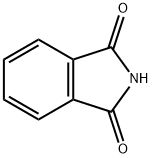
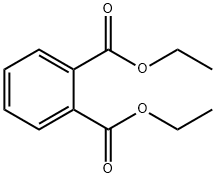
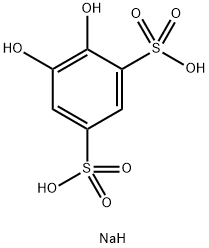


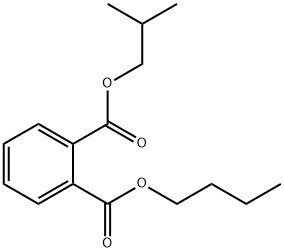

You may like
-
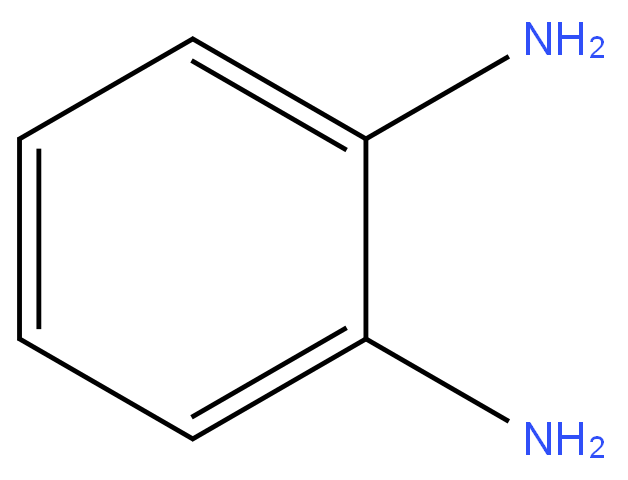 1,2-Phenylenediamine 98%View Details
1,2-Phenylenediamine 98%View Details -
 Ortho Phenylene Diamine (OPDA) CASView Details
Ortho Phenylene Diamine (OPDA) CASView Details -
![1,2-Phenylenediamine [for Biochemical Research] CAS 95-54-5](https://img.chemicalbook.in//Content/image/CP5.jpg) 1,2-Phenylenediamine [for Biochemical Research] CAS 95-54-5View Details
1,2-Phenylenediamine [for Biochemical Research] CAS 95-54-5View Details
95-54-5 -
 1,2-Phenylenediamine CAS 95-54-5View Details
1,2-Phenylenediamine CAS 95-54-5View Details
95-54-5 -
 o-Phenylene diamine CAS 95-54-5View Details
o-Phenylene diamine CAS 95-54-5View Details
95-54-5 -
 o-PHENYLENEDIAMINE For Synthesis CAS 95-54-5View Details
o-PHENYLENEDIAMINE For Synthesis CAS 95-54-5View Details
95-54-5 -
 O-Phenylenediamine 98% CAS 95-54-5View Details
O-Phenylenediamine 98% CAS 95-54-5View Details
95-54-5 -
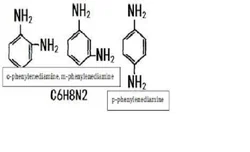 Ortho Phenylene Diamine, 25 KG, BagView Details
Ortho Phenylene Diamine, 25 KG, BagView Details
95-54-5
